Verdict
The Poco M7 Pro turns out to be a genuine surprise — and a pleasant one at that. With up to six years of software updates, Xiaomi's entry-level phone operates almost on par with the Galaxy A26, but also offers several advantages, such as a modern design, a brighter OLED panel with PWM dimming, and longer battery life. Even the quality of the front and rear cameras is surprisingly decent for this price range.
But where has Xiaomi made compromises with its Poco device? The entry-level MediaTek SoC leaves little doubt about the M7 Pro's budget roots, with everyday performance that never quite feels refined. And while Xiaomi promises long-term software support, the phone ships with an outdated version of Android and the first generation of HyperOS — a combination that doesn't exactly inspire confidence in its future-proofing.
Still, if you're not put off by the absence of an ultra-wide-angle camera or eSIM support, there's a lot of smartphone here for the money. As an alternative, the nearly identical Redmi Note 14 5G may also be worth a look.
Pros
Cons
Price and availability
The Poco M7 Pro 5G has a recommended retail price (RRP) starting at €240 (around $260 USD), but it's already available from select retailers (including Amazon.de) at the manufacturer's early-bird price of under €200 (around $215 USD).
The phone is available in three colour options: Lunar Dust, Lavender Frost, and Olive Twilight.
Table of Contents
- Verdict
- Poco M7 Pro 5G specifications
- Case – Xiaomi phone stays protected
- Features – Poco M7 Pro limited to USB 2.0
- Software – Poco M7 Pro ships with Android 14
- Communication and GNSS - Xiaomi smartphone with WiFi 5
- Phone functions and voice quality – Xiaomi phone with Dual SIM
- Cameras – Poco M7 Pro uses OIS
- Accessories and warranty – Poco-Phone without charger
- Input devices and operation – Poco M7 Pro is responsive
- Display – Xiaomi phone with 120 Hz
- Performance - Poco M7 Pro relies on MediaTek
- Gaming – Xiaomi phone is not a gaming phone
- Emissions – Poco M7 Pro stays cool
- Battery Life – Xiaomi Smartphone powers up in no time
- Notebookcheck overall rating
- Possible alternatives in comparison
With the Poco M7 Pro 5G, Xiaomi introduces an entry-level smartphone that aims to combine performance, features, and impressive camera capabilities in an attractive package. Powered by the Dimensity 7025 in its Ultra variant, the Poco device offers photography enthusiasts a Sony IMX882 sensor with a wide aperture and optical image stabilisation. The inclusion of both a microSD card slot and a 3.5 mm headphone jack also reflects a set of hardware features that have largely disappeared from today's smartphone market.
Poco M7 Pro 5G specifications
Case – Xiaomi phone stays protected
At just eight millimetres thick and weighing 190 grams, the Poco M7 Pro ranks among the lighter smartphones on the market. However, this low weight does come with some compromises in feel: the Xiaomi phone features neither a premium glass back nor a metal frame. That said, it doesn't feel cheap in the hand, and the matte finish helps resist fingerprints.
The Poco M7 Pro also carries an official IP64 rating, ensuring the chassis is both dustproof and resistant to splashes of water.
On the front, Xiaomi uses Corning Gorilla Glass 5. The form factor remains nearly identical to its predecessor but slightly slimmer bezels improve the screen-to-body ratio to 87.4 percent. Overall build quality is solid, with panel gaps that are clean and well-aligned.
Features – Poco M7 Pro limited to USB 2.0
The Poco M7 Pro is available with either 8 or 12 GB of LPDDR4X RAM and comes with 256 or 512 GB of UFS 2.2 storage. The RAM can be expanded by up to 12 GB, which, according to Xiaomi, allows up to 42 apps to run simultaneously under optimal conditions. However, this extension, implemented via a swap file in the internal storage, operates significantly slower than actual RAM.
As expected in this price segment, the mid-range smartphone is equipped with a basic USB 2.0 port, which does not support wired video output. That said, USB-OTG is supported, as are the exFAT and NTFS file systems. In our file copy test using a Samsung SSD T7, the USB port delivered sluggish transfer speeds of just 24 MB/s.
Despite using OLED display technology, the Poco M7 Pro does not offer an always-on display for notifications. However, it does include a range of additional features such as NFC, Miracast, and an infrared blaster, allowing the Xiaomi phone to be used as a remote control for compatible devices.
microSD card reader
The internal UFS storage can be expanded by up to 2 TB via a microSD card using the hybrid slot. The M7 Pro also supports the exFAT file system.
In our testing, data transfer rates were significantly higher than those of the Poco M6 Pro. When paired with an Angelbird AV PRO V60, we measured transfer speeds of nearly 60 MB/s. The CPD test also produced strong results for the Poco M7 Pro.
| SD Card Reader - average JPG Copy Test (av. of 3 runs) | |
| Xiaomi Poco M7 Pro 5G (Angelbird AV Pro V60) | |
| Samsung Galaxy A26 5G (Angelbird AV Pro V60) | |
| Motorola Moto G75 (Angelbird V60) | |
| Average of class Smartphone (5.72 - 58.9, n=68, last 2 years) | |
| Xiaomi Redmi Note 14 5G (Angelbird AV Pro V60) | |
| Xiaomi Poco M6 Pro (Angelbird AV Pro V60) | |
Cross Platform Disk Test (CPDT)
Software – Poco M7 Pro ships with Android 14
The Poco M7 Pro ships with Android 14 and the older HyperOS 1. Pre-installed advertising push notifications may be a minor annoyance, but they can be disabled in the Privacy and Security settings.
One of the new strengths of the Poco M series is its long software support. The M7 Pro already aligns with the EU directive requiring manufacturers to provide software updates for at least five years for new smartphones and tablets.
According to a statement from Xiaomi Germany, the entry-level phone will receive security patches for six years and four major Android updates. However, at the time of testing, the patches were already outdated, with the most recent being from February 2025.
Sustainability
Xiaomi emphasises the general use of recycled materials and bio-based high-polymer materials, as well as recycled plastic, across all of its smartphones. However, the company does not provide specific details on the materials used, their recycling rates, or data on CO2 consumption. The packaging of the Poco M7 Pro appears to be plastic-free, although protective films are used for safeguarding the device.
In accordance with the new EU directive, replacement parts for the Poco M7 Pro should, in theory, be available for up to seven years.
Communication and GNSS - Xiaomi smartphone with WiFi 5
When it comes to connectivity, the Poco M7 Pro shows both strengths and weaknesses. The entry-level phone supports mobile data with the 5G standard, offering a wide range of frequencies. The 4G band support is also quite impressive for its price range, and all relevant frequencies for the German-speaking region are included.
However, the Xiaomi phone lacks future-proofing with its WiFi 5 standard and only a single transmit and receive channel (1x1 MIMO). In our tests using the reference router Asus ROG Rapture GT-AXE11000, we recorded speeds of only around 370 Mbps. On the plus side, data rates remained largely stable throughout.
| Networking | |
| Xiaomi Poco M7 Pro 5G | |
| iperf3 transmit AXE11000 | |
| iperf3 receive AXE11000 | |
| Xiaomi Redmi Note 14 5G | |
| iperf3 transmit AXE11000 | |
| iperf3 receive AXE11000 | |
| Samsung Galaxy A26 5G | |
| iperf3 transmit AXE11000 | |
| iperf3 receive AXE11000 | |
| Xiaomi Poco X7 | |
| iperf3 transmit AXE11000 | |
| iperf3 receive AXE11000 | |
| Motorola Moto G75 | |
| iperf3 transmit AXE11000 6GHz | |
| iperf3 receive AXE11000 6GHz | |
| Xiaomi Poco M6 Pro | |
| iperf3 transmit AXE11000 | |
| iperf3 receive AXE11000 | |
| Average 802.11 a/b/g/n/ac | |
| iperf3 transmit AXE11000 | |
| iperf3 receive AXE11000 | |
| Average of class Smartphone | |
| iperf3 transmit AXE11000 | |
| iperf3 receive AXE11000 | |
| iperf3 transmit AXE11000 6GHz | |
| iperf3 receive AXE11000 6GHz | |
To test the accuracy of the Poco M7 Pro's location tracking, we took it on a walk and compared the recorded data with that of a Garmin Venu 2. The positioning is determined very accurately, with a precision of 1 metre. However, the signal strength is quite weak. The deviations in the route data for the Poco phone are also quite noticeable. Since the Poco M7 Pro only supports single-band GNSS, it tends to shorten the distances. That said, in-car navigation should still work without any issues.
Phone functions and voice quality – Xiaomi phone with Dual SIM
The voice quality of the Poco M7 Pro is impressive. There are no annoying noises, and the voices of callers are transmitted clearly. For voice calls over the 5G and 4G networks, VoNR and VoLTE are supported. Additionally, VoWi-Fi enables calls over Wi-Fi.
For those who wish, the Poco M7 Pro can be equipped with two nanoSIM card slots to enable the 5G Dual SIM function, though this means sacrificing the ability to expand storage. eSIM integration is not supported.
Cameras – Poco M7 Pro uses OIS
The front camera of the Poco M7 Pro features a 20 MP OmniVision wide-angle lens, capturing many details under good lighting conditions. The exposure also performs well. Unfortunately, the sensor only supports 1080p video at 30 frames per second. This limitation also applies to the main camera, which is disappointing, as the Sony IMX882 in the sibling model, the X7 Pro, is capable of 4K60 video.
On the plus side, the 50 MP main camera of the Poco M7 Pro comes with an f/1.5 aperture and optical image stabilisation. In everyday use, it delivers impressive daylight photos with balanced sharpness and high dynamic range. However, noticeable blur appears at the edges. Surprisingly, the entry-level phone performs strongly in low light. The large aperture lets in plenty of light onto the relatively small 1/1.95 sensor, resulting in excellent illumination and comparatively low blurring.
Image comparison
Choose a scene and navigate within the first image. One click changes the position on touchscreens. One click on the zoomed-in image opens the original in a new window. The first image shows the scaled photograph of the test device.
Wide angleWide angleLow Light5x ZoomUnder controlled lighting conditions, we analyse the colour representation compared to the actual reference colours. The Poco M7 Pro shows a visible deviation, but overall, the camera software calculates the colours quite well for its price range. No significant colour fidelity outliers (>15) are visible on the ColorChecker Passport.
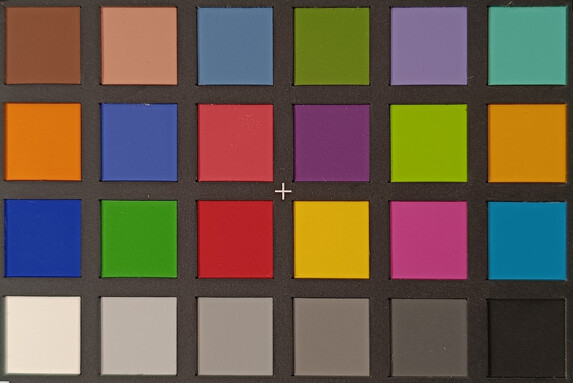
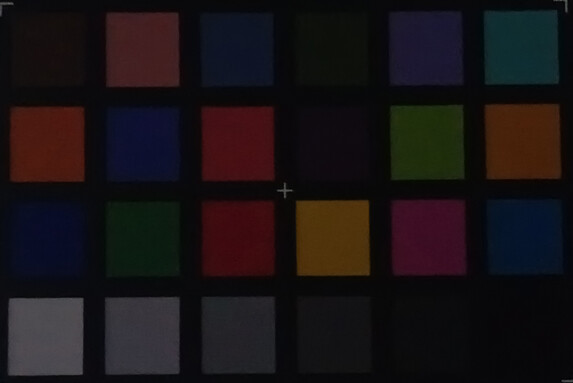
Accessories and warranty – Poco-Phone without charger
The entry-level phone comes with a USB-C cable, a protective case, and a SIM tool. A screen protector is also pre-installed. However, the matching 45-watt charger is missing.
The warranty in Germany is 12 months, and it can be extended through the in-house insurance package to cover accidental damage and theft, starting at €39 (RRP).
Input devices and operation – Poco M7 Pro is responsive
Inputs on the 6.67-inch AMOLED display are accurately registered all the way to the edges of the touchscreen. The phone supports a touch sampling rate of up to 240 Hz, which increases to 2160 Hz in Game Turbo mode. Xiaomi's proprietary Wet-Touch technology also allows operation with damp or moist hands, which works surprisingly well in everyday use.
Thanks to the high refresh rate of up to 120 Hz, the system can render animations smoothly, although the MediaTek SoC is sometimes not up to the task, causing delays. The haptic feedback is also not a strength of the Poco M7 Pro. The vibration motor produces very undifferentiated vibrations and is quite loud.
For biometric unlocking, there's an in-display sensor that supports up to five fingers. The optical fingerprint recognition of the Xiaomi phone works reliably in testing, but not quickly. There is also an insecure AI-based facial recognition feature relying on 2D recognition using the front camera.
Display – Xiaomi phone with 120 Hz

Xiaomi equips its entry-level phone with a Samsung-supplied AMOLED panel featuring a 1080p resolution and 8-bit colour depth. The panel supports a maximum refresh rate of 120 Hz, which can be adaptively reduced to 60 Hz. According to the spec sheet, it also offers a peak brightness of 2,100 nits. TÜV Rheinland triple certification is also included (flicker-free, low blue light, and circadian-friendly).
In real-world use, the APL18 pattern, relevant for everyday brightness, yields an excellent result of 1,163 cd/m², coming very close to Xiaomi's stated 1,200-nit rating. Even higher luminance is possible when displaying HDR content, with the Poco M7 Pro reaching 2,118 cd/m². The display supports HDR10+, Dolby Vision, and HLG for high dynamic range video content.
| |||||||||||||||||||||||||
Brightness Distribution: 97 %
Center on Battery: 1157 cd/m²
Contrast: ∞:1 (Black: 0 cd/m²)
ΔE ColorChecker Calman: 1.1 | ∀{0.5-29.43 Ø4.79}
ΔE Greyscale Calman: 1.6 | ∀{0.09-98 Ø5}
99.6% sRGB (Calman 2D)
Gamma: 2.21
CCT: 6622 K
| Xiaomi Poco M7 Pro 5G AMOLED, 2400x1080, 6.7" | Xiaomi Redmi Note 14 5G AMOLED, 2400x1080, 6.7" | Samsung Galaxy A26 5G Super AMOLED, 2340x1080, 6.7" | Xiaomi Poco X7 AMOLED, 2712x1220, 6.7" | Motorola Moto G75 IPS, 2388x1080, 6.8" | Xiaomi Poco M6 Pro AMOLED, 2400x1080, 6.7" | |
|---|---|---|---|---|---|---|
| Screen | -24% | -101% | -5% | -51% | 2% | |
| Brightness middle (cd/m²) | 1157 | 1147 -1% | 735 -36% | 1156 0% | 947 -18% | 1016 -12% |
| Brightness (cd/m²) | 1151 | 1146 0% | 731 -36% | 1150 0% | 946 -18% | 1016 -12% |
| Brightness Distribution (%) | 97 | 96 -1% | 99 2% | 98 1% | 95 -2% | 94 -3% |
| Black Level * (cd/m²) | 0.46 | |||||
| Colorchecker dE 2000 * | 1.1 | 1.6 -45% | 3.8 -245% | 1.1 -0% | 2.53 -130% | 1.1 -0% |
| Colorchecker dE 2000 max. * | 2.4 | 3.7 -54% | 5.8 -142% | 3.1 -29% | 4.91 -105% | 1.9 21% |
| Greyscale dE 2000 * | 1.6 | 2.3 -44% | 4 -150% | 1.6 -0% | 2.1 -31% | 1.3 19% |
| Gamma | 2.21 100% | 2.27 97% | 1.98 111% | 2.22 99% | 2.237 98% | 2.28 96% |
| CCT | 6622 98% | 6368 102% | 6628 98% | 6304 103% | 6733 97% | 6420 101% |
| Contrast (:1) | 2059 |
* ... smaller is better
To control screen brightness, the Poco M7 Pro uses the PWM modulation method, which can cause screen flicker. We measured a high frequency of 952 Hz, which is consistent with the spec sheet of the Poco phone (960 Hz). In addition to high-frequency PWM dimming, the modulation depth, measured with an oscilloscope, is around 14 percent, making it relatively eye-friendly.
Screen Flickering / PWM (Pulse-Width Modulation)
| Screen flickering / PWM detected | 60 Hz Amplitude: 13.77 % Secondary Frequency: 952 Hz | ||
The display backlight flickers at 60 Hz (worst case, e.g., utilizing PWM) . The frequency of 60 Hz is very low, so the flickering may cause eyestrain and headaches after extended use. In comparison: 53 % of all tested devices do not use PWM to dim the display. If PWM was detected, an average of 8152 (minimum: 5 - maximum: 343500) Hz was measured. | |||
Measurement series with fixed zoom and different brightness settings (The amplitude curve at minimum brightness appears flat, but this is due to the scaling. In the info box, the enlarged version of the amplitude at minimum brightness can be seen.)
We examine the deviations in colour calibration using the analysis software Calman. In the “Standard” profile, the differences in individual colours are barely noticeable, and the measured DeltaE values are very low. The settings options in HyperOS are also sufficiently comprehensive. Three colour profiles are available, each with adjustable colour temperature settings.
Display Response Times
| ↔ Response Time Black to White | ||
|---|---|---|
| 1.47 ms ... rise ↗ and fall ↘ combined | ↗ 0.743 ms rise | |
| ↘ 0.726 ms fall | ||
| The screen shows very fast response rates in our tests and should be very well suited for fast-paced gaming. In comparison, all tested devices range from 0.1 (minimum) to 240 (maximum) ms. » 7 % of all devices are better. This means that the measured response time is better than the average of all tested devices (20.3 ms). | ||
| ↔ Response Time 50% Grey to 80% Grey | ||
| 1.92 ms ... rise ↗ and fall ↘ combined | ↗ 0.9665 ms rise | |
| ↘ 0.955 ms fall | ||
| The screen shows very fast response rates in our tests and should be very well suited for fast-paced gaming. In comparison, all tested devices range from 0.165 (minimum) to 636 (maximum) ms. » 8 % of all devices are better. This means that the measured response time is better than the average of all tested devices (31.7 ms). | ||
The Xiaomi phone makes a strong impression outdoors. Even under direct sunlight, display contents remain very clearly visible. However, if you choose not to use the brightness sensor, you should be aware that the luminance is limited to 473 cd/m². There's nothing to criticise in terms of viewing angles. The colours of the OLED panel remain vibrant, even at sharp inclines.
Performance - Poco M7 Pro relies on MediaTek
The Poco M7 Pro is equipped with a Dimensity 7025-Ultra, which, despite the "Ultra" label, doesn't really outperform the standard version of the MediaTek SoC. In fact, a Moto G55 performs slightly better in Geekbench tests. However, the Xiaomi phone performs quite well in benchmarks for its price range. The Dimensity 7300 in the sibling model, the Poco X7, is more powerful, but the differences in single-core performance aren't particularly large.
| UL Procyon AI Inference for Android - Overall Score NNAPI | |
| Average of class Smartphone (3769 - 81594, n=137, last 2 years) | |
| Motorola Moto G75 | |
| Xiaomi Poco M6 Pro | |
| Xiaomi Poco X7 | |
| Xiaomi Poco M7 Pro 5G | |
| Samsung Galaxy A26 5G | |
| Average MediaTek Dimensity 7025 (5946 - 6394, n=2) | |
| Xiaomi Redmi Note 14 5G | |
The IMG BXM-8-256 GPU in the Poco M7 Pro is significantly weaker than the GPU unit in the Galaxy A26 or the Poco X7. In fact, the sibling model, the Poco X7, achieves more than double the frames per second in GFXBench thanks to its Mali-G615 MP2.
GFXBench 3.0: on screen Manhattan Onscreen OGL | 1920x1080 1080p Manhattan Offscreen
GFXBench 3.1: on screen Manhattan ES 3.1 Onscreen | 1920x1080 Manhattan ES 3.1 Offscreen
GFXBench: on screen Car Chase Onscreen | 1920x1080 Car Chase Offscreen | on screen Aztec Ruins High Tier Onscreen | 2560x1440 Aztec Ruins High Tier Offscreen | on screen Aztec Ruins Normal Tier Onscreen | 1920x1080 Aztec Ruins Normal Tier Offscreen | 3840x2160 4K Aztec Ruins High Tier Offscreen
3DMark: 2560x1440 Sling Shot Extreme (ES 3.1) Unlimited Physics | 2560x1440 Sling Shot Extreme (ES 3.1) Unlimited Graphics | 2560x1440 Sling Shot Extreme (ES 3.1) Unlimited
| GFXBench (DX / GLBenchmark) 2.7 / T-Rex Onscreen | |
| Motorola Moto G75 | |
| Samsung Galaxy A26 5G | |
| Xiaomi Poco X7 | |
| Xiaomi Poco M7 Pro 5G | |
| Xiaomi Redmi Note 14 5G | |
| Xiaomi Poco M6 Pro | |
| GFXBench (DX / GLBenchmark) 2.7 / T-Rex Offscreen | |
| Motorola Moto G75 | |
| Samsung Galaxy A26 5G | |
| Xiaomi Poco X7 | |
| Xiaomi Poco M7 Pro 5G | |
| Xiaomi Redmi Note 14 5G | |
| Xiaomi Poco M6 Pro | |
| GFXBench 3.0 / Manhattan Onscreen OGL | |
| Samsung Galaxy A26 5G | |
| Motorola Moto G75 | |
| Xiaomi Poco X7 | |
| Xiaomi Poco M7 Pro 5G | |
| Xiaomi Redmi Note 14 5G | |
| Xiaomi Poco M6 Pro | |
| GFXBench 3.0 / 1080p Manhattan Offscreen | |
| Xiaomi Poco X7 | |
| Samsung Galaxy A26 5G | |
| Motorola Moto G75 | |
| Xiaomi Poco M7 Pro 5G | |
| Xiaomi Redmi Note 14 5G | |
| Xiaomi Poco M6 Pro | |
| GFXBench 3.1 / Manhattan ES 3.1 Onscreen | |
| Motorola Moto G75 | |
| Samsung Galaxy A26 5G | |
| Xiaomi Poco X7 | |
| Xiaomi Redmi Note 14 5G | |
| Xiaomi Poco M7 Pro 5G | |
| Xiaomi Poco M6 Pro | |
| GFXBench 3.1 / Manhattan ES 3.1 Offscreen | |
| Xiaomi Poco X7 | |
| Motorola Moto G75 | |
| Samsung Galaxy A26 5G | |
| Xiaomi Poco M7 Pro 5G | |
| Xiaomi Redmi Note 14 5G | |
| Xiaomi Poco M6 Pro | |
| GFXBench / Car Chase Onscreen | |
| Samsung Galaxy A26 5G | |
| Motorola Moto G75 | |
| Xiaomi Poco X7 | |
| Xiaomi Poco M7 Pro 5G | |
| Xiaomi Redmi Note 14 5G | |
| Xiaomi Poco M6 Pro | |
| GFXBench / Car Chase Offscreen | |
| Xiaomi Poco X7 | |
| Samsung Galaxy A26 5G | |
| Motorola Moto G75 | |
| Xiaomi Poco M7 Pro 5G | |
| Xiaomi Redmi Note 14 5G | |
| Xiaomi Poco M6 Pro | |
| GFXBench / Aztec Ruins High Tier Onscreen | |
| Samsung Galaxy A26 5G | |
| Motorola Moto G75 | |
| Xiaomi Poco X7 | |
| Xiaomi Poco M7 Pro 5G | |
| Xiaomi Redmi Note 14 5G | |
| Xiaomi Poco M6 Pro | |
| GFXBench / Aztec Ruins High Tier Offscreen | |
| Xiaomi Poco X7 | |
| Motorola Moto G75 | |
| Samsung Galaxy A26 5G | |
| Xiaomi Poco M7 Pro 5G | |
| Xiaomi Redmi Note 14 5G | |
| Xiaomi Poco M6 Pro | |
| GFXBench / Aztec Ruins Normal Tier Onscreen | |
| Motorola Moto G75 | |
| Samsung Galaxy A26 5G | |
| Xiaomi Poco X7 | |
| Xiaomi Poco M7 Pro 5G | |
| Xiaomi Redmi Note 14 5G | |
| Xiaomi Poco M6 Pro | |
| GFXBench / Aztec Ruins Normal Tier Offscreen | |
| Xiaomi Poco X7 | |
| Motorola Moto G75 | |
| Samsung Galaxy A26 5G | |
| Xiaomi Redmi Note 14 5G | |
| Xiaomi Poco M7 Pro 5G | |
| Xiaomi Poco M6 Pro | |
| GFXBench / 4K Aztec Ruins High Tier Offscreen | |
| Xiaomi Poco X7 | |
| Motorola Moto G75 | |
| Samsung Galaxy A26 5G | |
| Xiaomi Poco M7 Pro 5G | |
| Xiaomi Redmi Note 14 5G | |
| Xiaomi Poco M6 Pro | |
| 3DMark / Sling Shot Extreme (ES 3.1) Unlimited Physics | |
| Xiaomi Poco X7 | |
| Samsung Galaxy A26 5G | |
| Xiaomi Poco M6 Pro | |
| Xiaomi Redmi Note 14 5G | |
| Xiaomi Poco M7 Pro 5G | |
| 3DMark / Sling Shot Extreme (ES 3.1) Unlimited Graphics | |
| Xiaomi Poco X7 | |
| Samsung Galaxy A26 5G | |
| Xiaomi Poco M6 Pro | |
| Xiaomi Redmi Note 14 5G | |
| Xiaomi Poco M7 Pro 5G | |
| 3DMark / Sling Shot Extreme (ES 3.1) Unlimited | |
| Xiaomi Poco X7 | |
| Samsung Galaxy A26 5G | |
| Xiaomi Poco M6 Pro | |
| Xiaomi Redmi Note 14 5G | |
| Xiaomi Poco M7 Pro 5G | |
When browsing the web, there are no major surprises. Websites load fairly quickly, though images sometimes take a moment to appear while scrolling. The results in browser benchmarks are solid and in line with what we'd expect from an entry-level phone.
| Jetstream 2 - 2.0 Total Score | |
| Average of class Smartphone (23.8 - 387, n=153, last 2 years) | |
| Motorola Moto G75 (Chrome 131) | |
| Samsung Galaxy A26 5G (Chrome 135.0.7049.111) | |
| Xiaomi Redmi Note 14 5G (Chrome 133.0.6943.49) | |
| Average MediaTek Dimensity 7025 (108.8 - 111.2, n=3) | |
| Xiaomi Poco M7 Pro 5G (Chrome 135) | |
| Xiaomi Poco X7 (Chrome 132.0.6834.163) | |
| Xiaomi Poco M6 Pro (chrome 122) | |
| Speedometer 2.0 - Result 2.0 | |
| Average of class Smartphone (15.2 - 643, n=129, last 2 years) | |
| Samsung Galaxy A26 5G (Chrome 135.0.7049.111) | |
| Xiaomi Poco M7 Pro 5G (Chrome 135) | |
| Average MediaTek Dimensity 7025 (107 - 112, n=2) | |
| Xiaomi Redmi Note 14 5G (Chrome 133.0.6943.49) | |
| Xiaomi Poco X7 (Chrome 132.0.6834.163) | |
| Motorola Moto G75 (Chrome 131) | |
| Xiaomi Poco M6 Pro (chrome 122) | |
| Speedometer 3 - Score 3.0 | |
| Average of class Smartphone (1.03 - 42.8, n=123, last 2 years) | |
| Samsung Galaxy A26 5G (Chrome 135.0.7049.111) | |
| Xiaomi Poco M7 Pro 5G (Chrome 135) | |
| Average MediaTek Dimensity 7025 (6.79 - 7.45, n=2) | |
| Motorola Moto G75 (Chrome 131) | |
| Xiaomi Poco X7 (Chrome 132.0.6834.163) | |
| Xiaomi Redmi Note 14 5G (Chrome 133.0.6943.49) | |
| WebXPRT 4 - Overall | |
| Average of class Smartphone (27 - 306, n=147, last 2 years) | |
| Motorola Moto G75 (Chrome 131) | |
| Samsung Galaxy A26 5G (Chrome 135.0.7049.111) | |
| Xiaomi Redmi Note 14 5G (Chrome 133.0.6943.49) | |
| Average MediaTek Dimensity 7025 (107 - 112, n=2) | |
| Xiaomi Poco M7 Pro 5G (Chrome 135) | |
| Xiaomi Poco X7 (Chrome 132.0.6834.163) | |
| Xiaomi Poco M6 Pro (Chrome 122) | |
| Octane V2 - Total Score | |
| Average of class Smartphone (2228 - 121337, n=200, last 2 years) | |
| Samsung Galaxy A26 5G (Chrome 135.0.7049.111) | |
| Motorola Moto G75 (Chrome 131) | |
| Xiaomi Poco M7 Pro 5G (Chrome 135) | |
| Xiaomi Redmi Note 14 5G (Chrome 133.0.6943.49) | |
| Average MediaTek Dimensity 7025 (34723 - 36734, n=3) | |
| Xiaomi Poco X7 (Chrome 132.0.6834.163) | |
| Xiaomi Poco M6 Pro (chrome 122) | |
| Mozilla Kraken 1.1 - Total | |
| Xiaomi Poco M6 Pro (chrome 122) | |
| Xiaomi Poco X7 | |
| Average of class Smartphone (257 - 28190, n=155, last 2 years) | |
| Xiaomi Poco M7 Pro 5G (Chrome 135) | |
| Average MediaTek Dimensity 7025 (1131 - 1132, n=2) | |
| Xiaomi Redmi Note 14 5G (Chrome 133.0.6943.49) | |
| Motorola Moto G75 (Chrome 131) | |
| Samsung Galaxy A26 5G (Chrome 135.0.7049.111) | |
* ... smaller is better
In terms of speed, the UFS storage in the Poco phone offers solid performance. For an entry-level phone, the results from the Androbench benchmark are perfectly acceptable.
| Xiaomi Poco M7 Pro 5G | Xiaomi Redmi Note 14 5G | Samsung Galaxy A26 5G | Xiaomi Poco X7 | Motorola Moto G75 | Xiaomi Poco M6 Pro | Average 256 GB UFS 2.2 Flash | Average of class Smartphone | |
|---|---|---|---|---|---|---|---|---|
| AndroBench 3-5 | -6% | -52% | -20% | 5% | -5% | -11% | 67% | |
| Sequential Read 256KB (MB/s) | 987.81 | 950.62 -4% | 528.54 -46% | 947.4 -4% | 1023.1 4% | 973.53 -1% | 901 ? -9% | 2222 ? 125% |
| Sequential Write 256KB (MB/s) | 943.43 | 792.56 -16% | 251.43 -73% | 915.23 -3% | 868.4 -8% | 910.9 -3% | 723 ? -23% | 1838 ? 95% |
| Random Read 4KB (MB/s) | 243.98 | 257.91 6% | 219.57 -10% | 100.16 -59% | 285.3 17% | 236.72 -3% | 228 ? -7% | 295 ? 21% |
| Random Write 4KB (MB/s) | 265.26 | 245.16 -8% | 61.8 -77% | 226.88 -14% | 279.5 5% | 228.61 -14% | 249 ? -6% | 336 ? 27% |
Gaming – Xiaomi phone is not a gaming phone
To better assess the limited graphics power of the built-in IMG GPU, we took a look at two games from the Play Store in partnership with GameBench. We measured the exact frame rates for each game.
The Poco M7 Pro is indeed gaming-capable, at least at the lowest settings. For Genshin Impact, we measured around 35 FPS, and for PUBG Mobile, approximately 40 FPS on average. However, at higher graphics settings, the Poco phone struggles, and smooth frame rates can no longer be achieved. For the Battle Royale game, high detail settings (UHD) cannot even be unlocked.
Emissions – Poco M7 Pro stays cool
Temperature
The Poco M7 Pro manages the surface temperatures of its casing very well. Since the IMG BXM-8-256 does not support 3DMark stress tests due to Vulkan incompatibility, and the GFXBench battery tests do not provide results, we are unable to provide exact values for throttling. As with other entry-level SoCs, throttling on the Poco M7 Pro should be less than two percent.
(±) The maximum temperature on the upper side is 41.4 °C / 107 F, compared to the average of 35.2 °C / 95 F, ranging from 21.9 to 247 °C for the class Smartphone.
(+) The bottom heats up to a maximum of 39.8 °C / 104 F, compared to the average of 34 °C / 93 F
(+) In idle usage, the average temperature for the upper side is 26.4 °C / 80 F, compared to the device average of 32.9 °C / 91 F.
Speakers
Xiaomi's entry-level smartphone features two speakers with some bass and prominent mids. Considering the price, the sound quality is quite impressive. For those seeking richer bass, the 3.5 mm headphone jack is available for wired listening, though it has a fairly high noise level of 42 dBFS. Alternatively, wireless audio can be streamed via Bluetooth 5.3, which supports a wide range of codecs.
Xiaomi Poco M7 Pro 5G audio analysis
(+) | speakers can play relatively loud (91.9 dB)
Bass 100 - 315 Hz
(-) | nearly no bass - on average 25.3% lower than median
(+) | bass is linear (3.7% delta to prev. frequency)
Mids 400 - 2000 Hz
(±) | reduced mids - on average 7.8% lower than median
(+) | mids are linear (5.9% delta to prev. frequency)
Highs 2 - 16 kHz
(+) | balanced highs - only 3.7% away from median
(+) | highs are linear (3.8% delta to prev. frequency)
Overall 100 - 16.000 Hz
(±) | linearity of overall sound is average (18.3% difference to median)
Compared to same class
» 18% of all tested devices in this class were better, 9% similar, 74% worse
» The best had a delta of 11%, average was 35%, worst was 134%
Compared to all devices tested
» 39% of all tested devices were better, 8% similar, 54% worse
» The best had a delta of 4%, average was 24%, worst was 134%
Motorola Moto G75 audio analysis
(+) | speakers can play relatively loud (85.2 dB)
Bass 100 - 315 Hz
(-) | nearly no bass - on average 26% lower than median
(±) | linearity of bass is average (14.1% delta to prev. frequency)
Mids 400 - 2000 Hz
(±) | higher mids - on average 5.6% higher than median
(±) | linearity of mids is average (7.7% delta to prev. frequency)
Highs 2 - 16 kHz
(+) | balanced highs - only 3.1% away from median
(±) | linearity of highs is average (7.3% delta to prev. frequency)
Overall 100 - 16.000 Hz
(±) | linearity of overall sound is average (20.8% difference to median)
Compared to same class
» 37% of all tested devices in this class were better, 8% similar, 55% worse
» The best had a delta of 11%, average was 35%, worst was 134%
Compared to all devices tested
» 55% of all tested devices were better, 8% similar, 37% worse
» The best had a delta of 4%, average was 24%, worst was 134%
Battery Life – Xiaomi Smartphone powers up in no time
Power consumption
The Polymer Lithium-Ion battery in the Poco M7 Pro has a capacity of 5,110 mAh and can be charged at up to 45 watts. This results in a charging time of around 60 minutes. Unfortunately, the entry-level phone does not support wireless charging, but it does support a wide range of fast-charging protocols. Power consumption remains low, both at idle and under load.
| Off / Standby | |
| Idle | |
| Load |
|
Key:
min: | |
| Xiaomi Poco M7 Pro 5G 5110 mAh | Xiaomi Redmi Note 14 5G 5110 mAh | Samsung Galaxy A26 5G 5000 mAh | Xiaomi Poco X7 5110 mAh | Motorola Moto G75 5000 mAh | Xiaomi Poco M6 Pro 5000 mAh | Average MediaTek Dimensity 7025 | Average of class Smartphone | |
|---|---|---|---|---|---|---|---|---|
| Power Consumption | -12% | -39% | -1% | -37% | -16% | -6% | -36% | |
| Idle Minimum * (Watt) | 1.14 | 1.15 -1% | 1.17 -3% | 1.09 4% | 0.8 30% | 1 12% | 1.145 ? -0% | 0.847 ? 26% |
| Idle Average * (Watt) | 1.3 | 1.55 -19% | 1.94 -49% | 1.28 2% | 1.1 15% | 1.19 8% | 1.425 ? -10% | 1.431 ? -10% |
| Idle Maximum * (Watt) | 1.34 | 1.57 -17% | 2.03 -51% | 1.31 2% | 1.5 -12% | 1.33 1% | 1.455 ? -9% | 1.61 ? -20% |
| Load Average * (Watt) | 2.96 | 3.87 -31% | 4.31 -46% | 3.25 -10% | 8.7 -194% | 6.27 -112% | 3.42 ? -16% | 7.09 ? -140% |
| Load Maximum * (Watt) | 8.18 | 7.66 6% | 11.79 -44% | 8.62 -5% | 10.1 -23% | 7.19 12% | 7.92 ? 3% | 11.2 ? -37% |
* ... smaller is better
Power consumption: Geekbench (150 cd/m²)
Power consumption: GFXbench (150 cd/m²)
Battery life
The battery life of the Poco M7 Pro is very impressive. The typically higher energy consumption from the communication modules is noticeable during the endless video loop test, but it is not pronounced. With a runtime of 23 hours, the battery lasts about 5.5 hours longer than in our Wi-Fi battery test — both tests conducted with a calibrated display brightness of 150 cd/m².
| Xiaomi Poco M7 Pro 5G 5110 mAh | Xiaomi Redmi Note 14 5G 5110 mAh | Samsung Galaxy A26 5G 5000 mAh | Xiaomi Poco X7 5110 mAh | Motorola Moto G75 5000 mAh | Xiaomi Poco M6 Pro 5000 mAh | |
|---|---|---|---|---|---|---|
| Battery runtime | -13% | -18% | 1% | 13% | -19% | |
| Reader / Idle (h) | 34.7 | 30 -14% | 33.1 -5% | 50.4 45% | ||
| H.264 (h) | 22.9 | 17 -26% | 18.7 -18% | 22.2 -3% | ||
| WiFi v1.3 (h) | 17.4 | 12.9 -26% | 12.3 -29% | 17.5 1% | 19.6 13% | 14.1 -19% |
| Load (h) | 5.2 | 6 15% | 4.2 -19% | 5 -4% |
Notebookcheck overall rating
The Poco M7 Pro is almost a no-brainer for under €200 (around $215 USD), thanks to its surprisingly long update support.
Xiaomi Poco M7 Pro 5G
- 05/16/2025 v8
Marcus Herbrich
Possible alternatives in comparison
Image | Model / Review | Price | Weight | Drive | Display |
|---|---|---|---|---|---|
| Xiaomi Poco M7 Pro 5G MediaTek Dimensity 7025 ⎘ IMG BXM-8-256 ⎘ 12 GB Memory, 256 GB UFS 2.1 | Amazon: 1. $7.99 Suttkue for Xiaomi Poco M7 P... 2. $345.00 Xiaomi Poco X7 PRO 5G + 4G L... 3. $350.00 XIAOMI Poco X7 PRO 5G + 4G L... List Price: 240€ | 190 g | 256 GB UFS 2.2 Flash | 6.67" 2400x1080 395 PPI AMOLED | |
| Xiaomi Redmi Note 14 5G MediaTek Dimensity 7025 ⎘ IMG BXM-8-256 ⎘ 8 GB Memory, 256 GB UFS 2.1 | Amazon: 1. $299.99 Xiaomi Redmi Note 14 5G + LT... 2. $312.58 Xiaomi Redmi Note 14 Pro 5G ... 3. $351.00 Xiaomi Redmi Note 14 Pro+ Pl... | 190 g | 256 GB UFS 2.2 Flash | 6.67" 2400x1080 395 PPI AMOLED | |
| Samsung Galaxy A26 5G Samsung Exynos 1380 ⎘ ARM Mali-G68 MP5 ⎘ 6 GB Memory, 128 GB | Amazon: 1. $213.49 SAMSUNG Galaxy A26 5G 2025 w... 2. $222.89 SAMSUNG Galaxy A26 5G with A... 3. $288.99 Samsung Galaxy A26 5G SM-A26... List Price: 299€ | 200 g | 128 GB UFS 3.1 Flash | 6.70" 2340x1080 385 PPI Super AMOLED | |
| Xiaomi Poco X7 MediaTek Dimensity 7300 ⎘ ARM Mali-G615 MP2 ⎘ 12 GB Memory, 512 GB UFS 2.1 | Amazon: 1. $345.00 Xiaomi Poco X7 PRO 5G + 4G L... 2. $350.00 XIAOMI Poco X7 PRO 5G + 4G L... 3. $345.00 Xiaomi Poco X7 PRO 5G + 4G L... | 185.5 g | 512 GB UFS 2.2 Flash | 6.67" 2712x1220 446 PPI AMOLED | |
| Motorola Moto G75 Qualcomm Snapdragon 6 Gen 3 ⎘ Qualcomm Adreno 710 ⎘ 8 GB Memory, 256 GB UFS 2.1 | Amazon: 1. $229.50 Motorola Moto G75 5G (XT2437... 2. $3.29 Heenjer 2 Pack for Motorola ... 3. $11.99 Ibywind 2 Pack Screen Protec... List Price: 299€ | 205 g | 256 GB UFS 2.2 Flash | 6.78" 2388x1080 387 PPI IPS | |
| Xiaomi Poco M6 Pro Mediatek Helio G99 ⎘ ARM Mali-G57 MP2 ⎘ 12 GB Memory, 512 GB UFS 2.1 | Amazon: List Price: 299€ | 181 g | 512 GB UFS 2.2 Flash | 6.67" 2400x1080 395 PPI AMOLED |
Transparency
The selection of devices to be reviewed is made by our editorial team. The test sample was provided to the author as a loan by the manufacturer or retailer for the purpose of this review. The lender had no influence on this review, nor did the manufacturer receive a copy of this review before publication. There was no obligation to publish this review. As an independent media company, Notebookcheck is not subjected to the authority of manufacturers, retailers or publishers.
This is how Notebookcheck is testing
Every year, Notebookcheck independently reviews hundreds of laptops and smartphones using standardized procedures to ensure that all results are comparable. We have continuously developed our test methods for around 20 years and set industry standards in the process. In our test labs, high-quality measuring equipment is utilized by experienced technicians and editors. These tests involve a multi-stage validation process. Our complex rating system is based on hundreds of well-founded measurements and benchmarks, which maintains objectivity. Further information on our test methods can be found here.




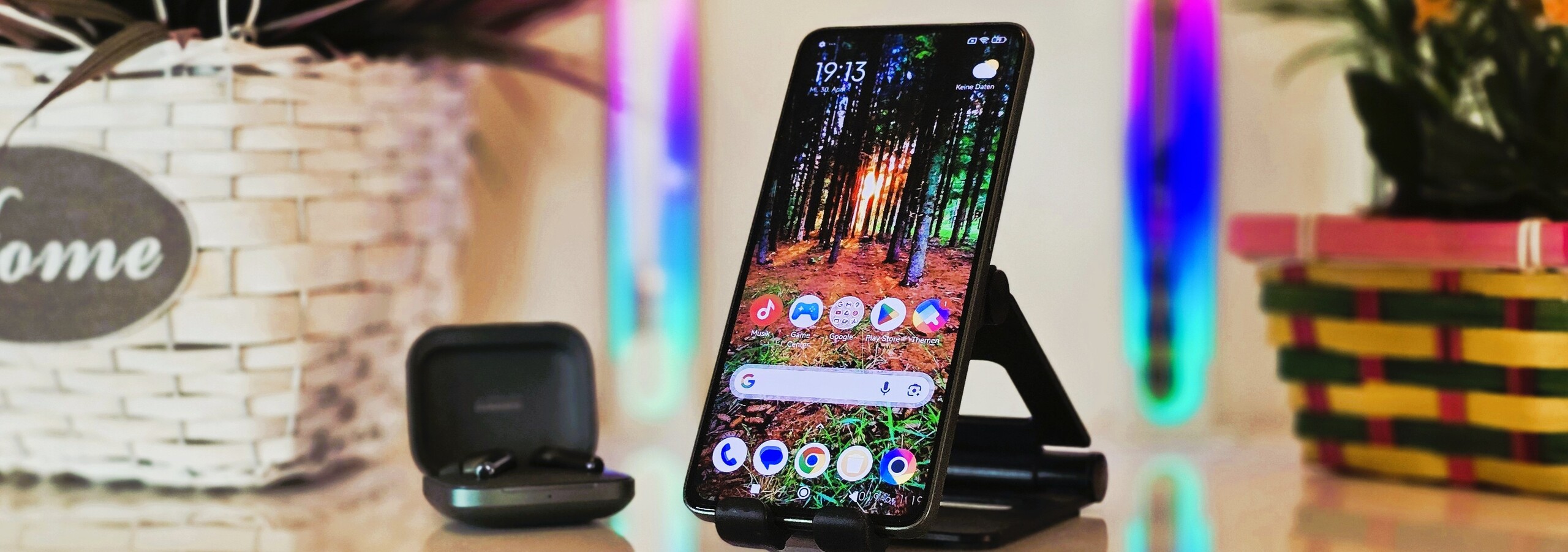


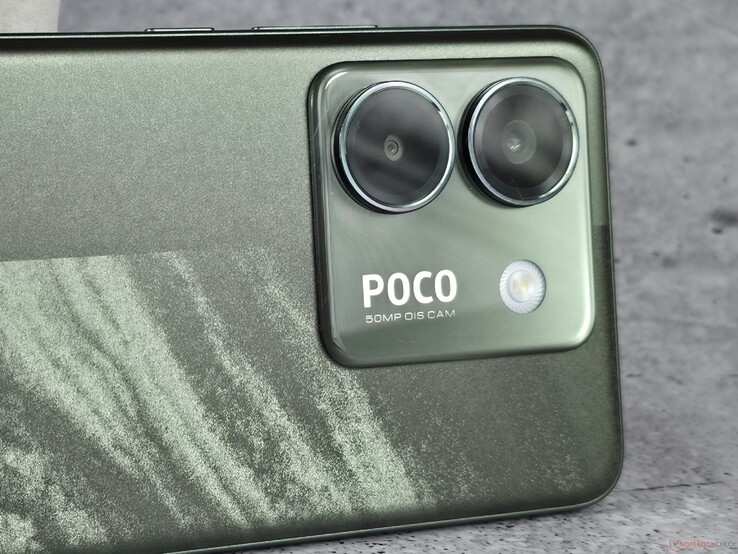








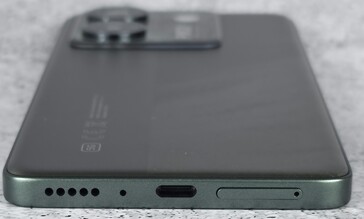
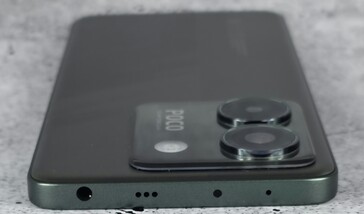

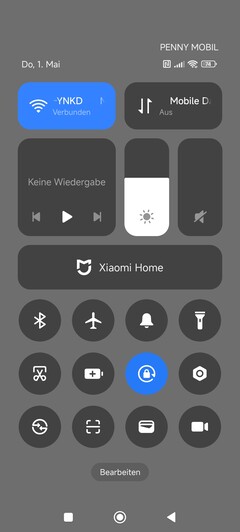

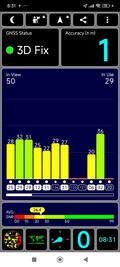
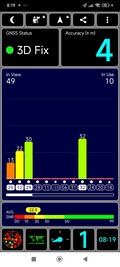

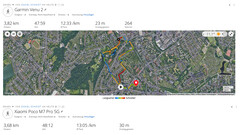













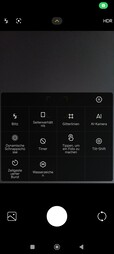


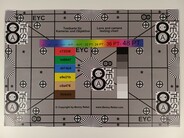



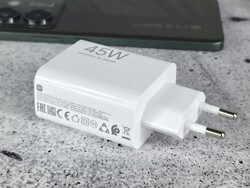
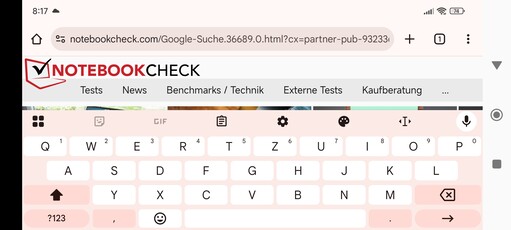


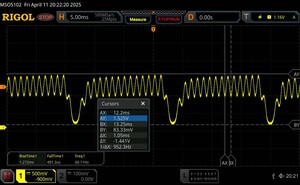






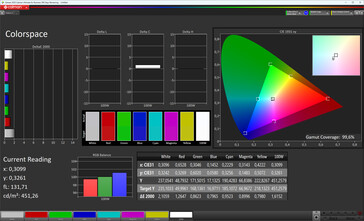
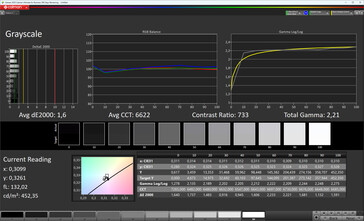
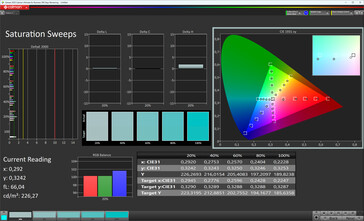
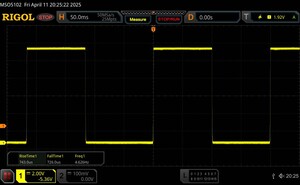
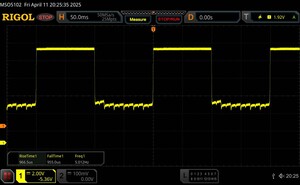
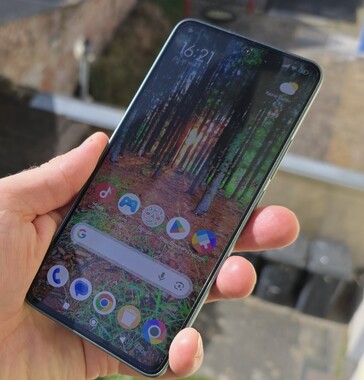




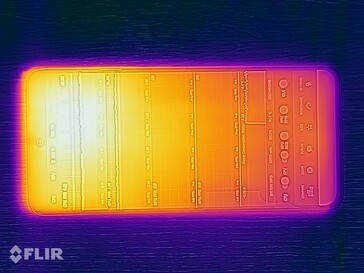

 Total Sustainability Score:
Total Sustainability Score: 















